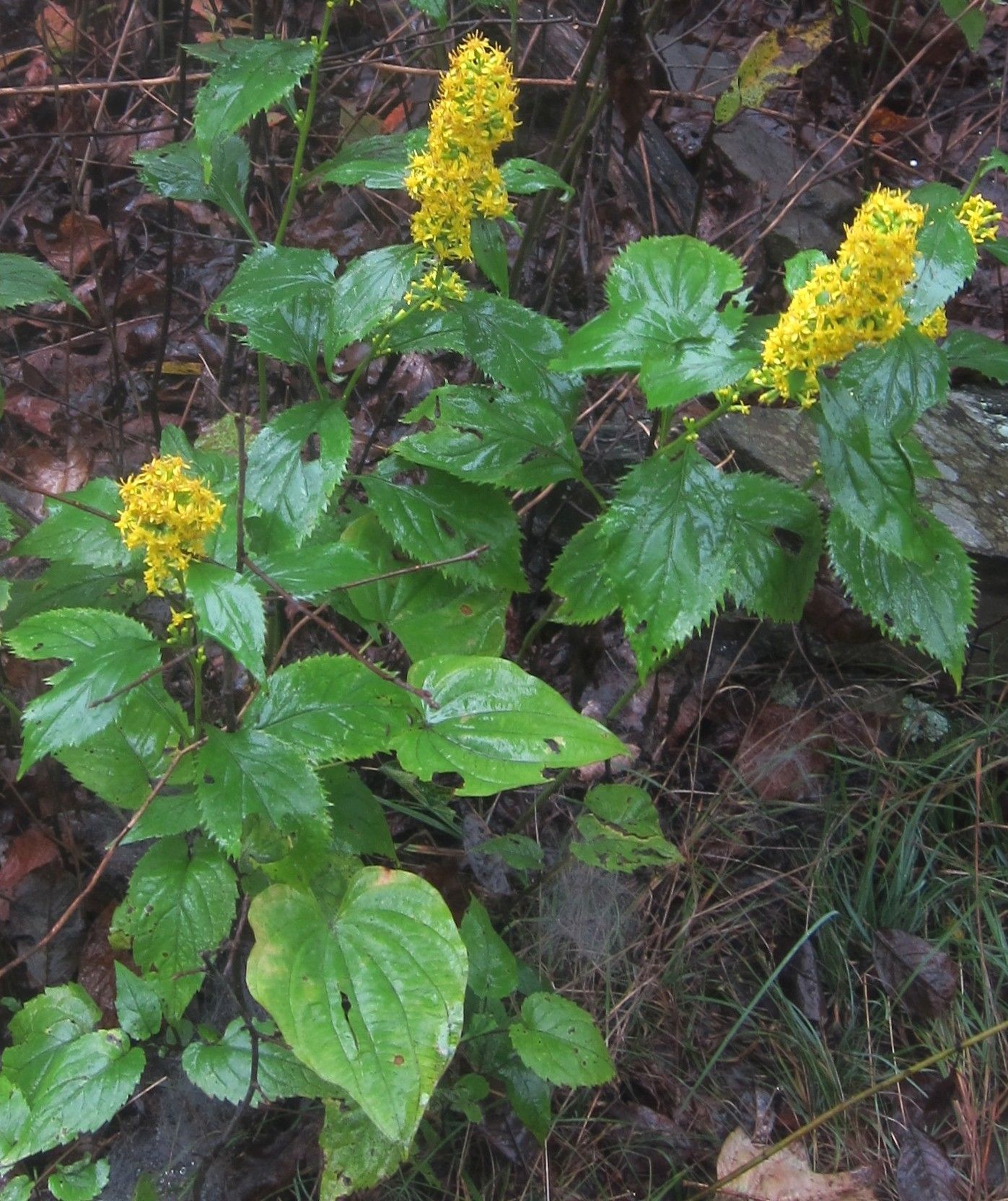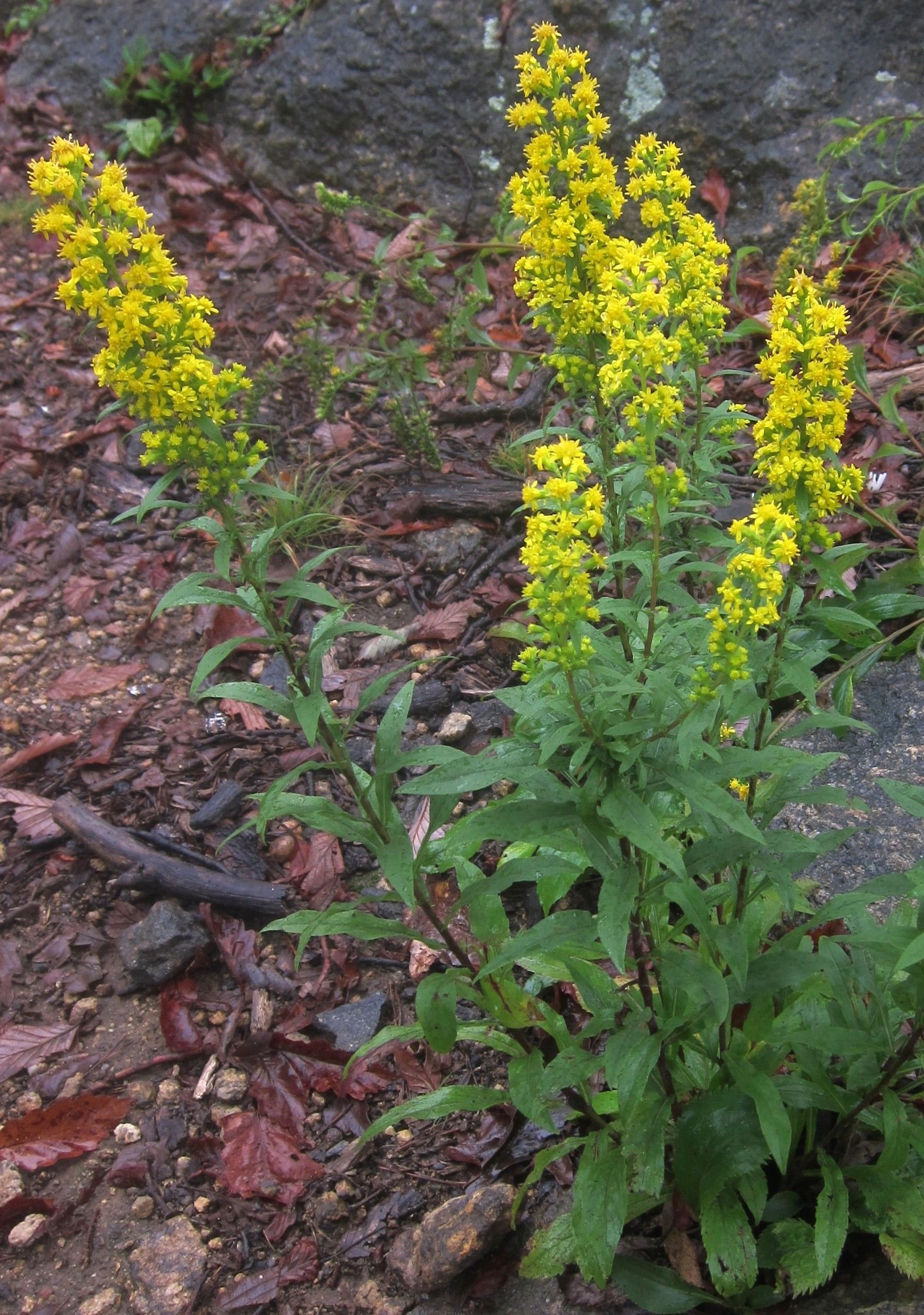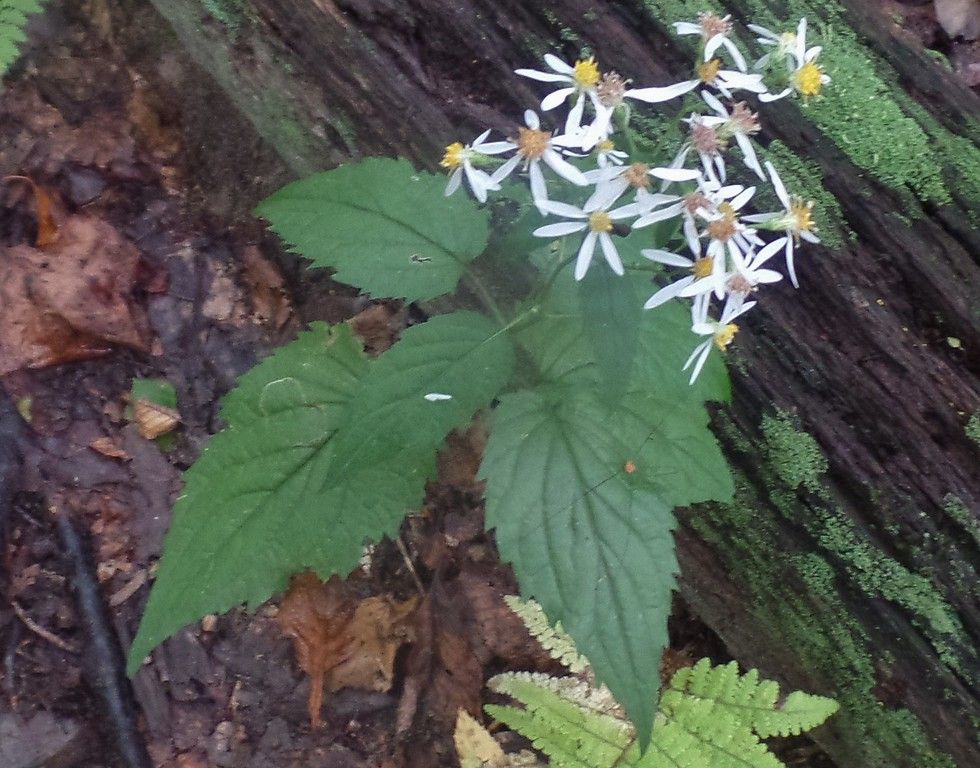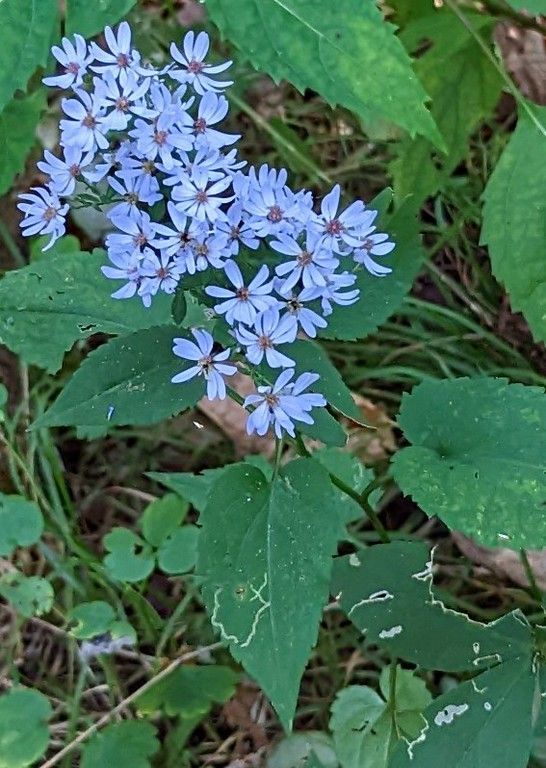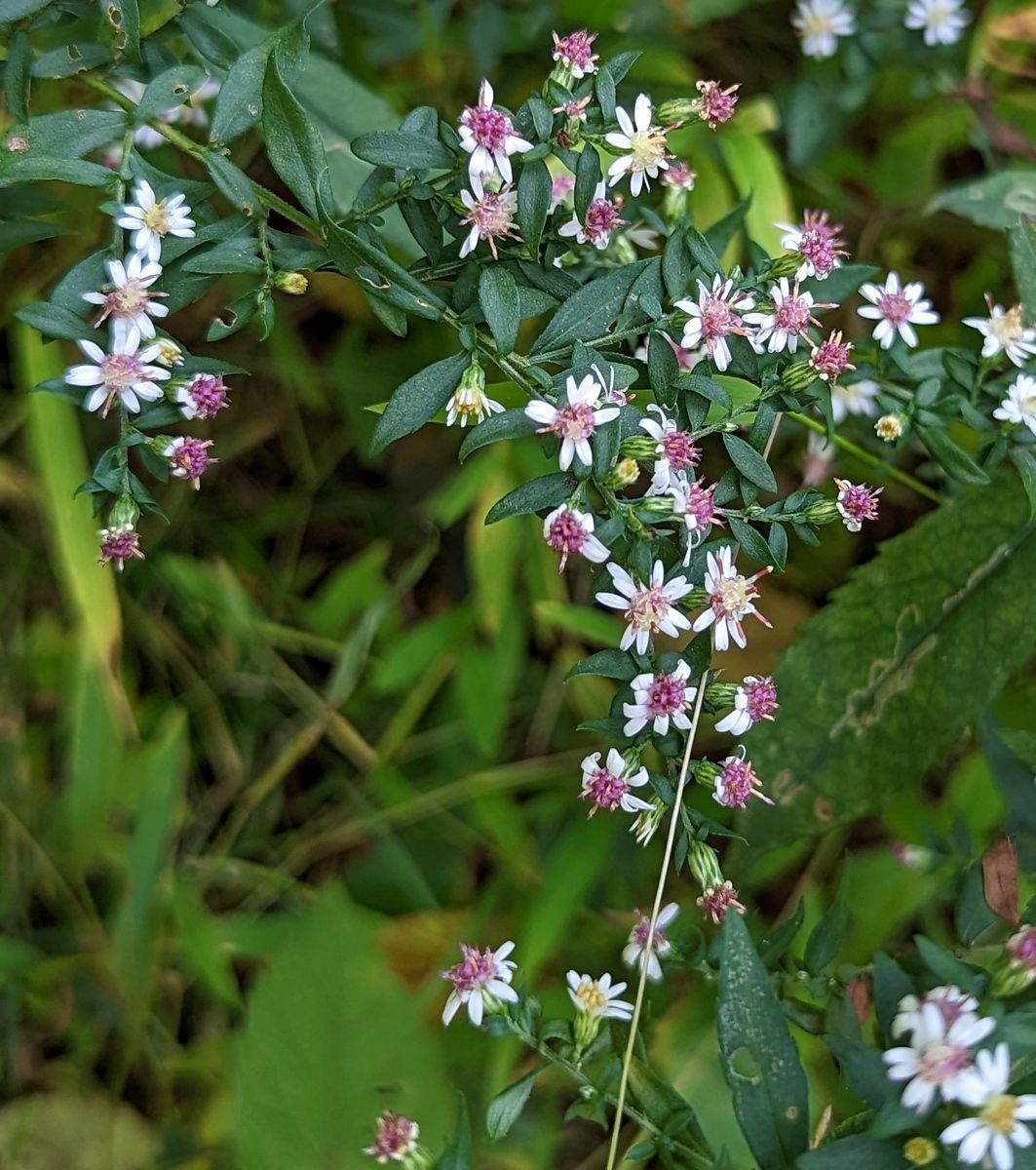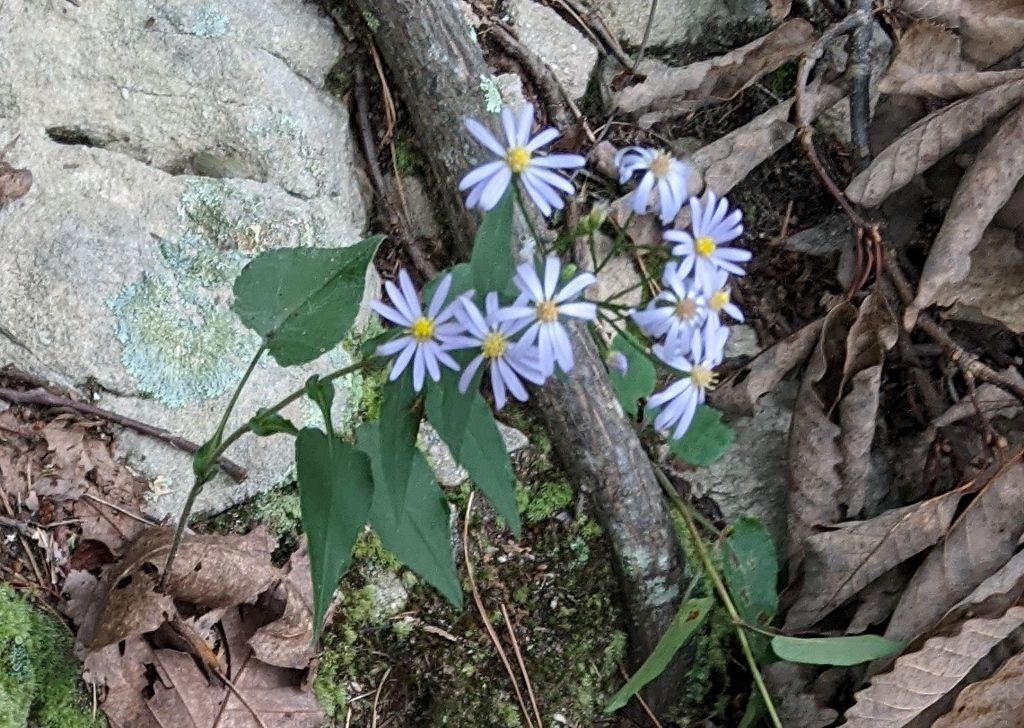What's that Flower?
By Richard Stromberg
The Old Rag loop hike is described on pages 54-57 of PATC’s “Circuit Hikes in Shenandoah National Park” and pages 252-255 of “Appalachian Trail Guide to Shenandoah National Park.” In addition to the challenging rock scrambles and spectacular views, Old Rag offers interesting flowers, some of them found only in rocky places like Old Rag.
This month shows notable plants to be seen in fall, mostly Asters and Goldenrod flowers and a variety of berries.
Goldenrods (Solidago) are known for their sprays of multiple, small, flowers. Seven Goldenrod species grow on Old Rag.
Early Goldenrod (S. juncea) and Sharp-leaved Goldenrod (S. arguta) have multiple, curved clusters of flowers branching at the top of the main stem with flowers only on one side of each stem. If you see such a Goldenrod in July or August, it is likely the Early Goldenrod, as its name implies. Its basal leaves taper gradually to the stem and the edges have sharp teeth. Sharp-leaved Goldenrod basal leaves are egg-shaped, narrowing to a slender stem and the edges of the bottom leaves are sharply, double-toothed.
Two species have flower clusters growing from the leaf axils. S. flexicaulis is called Zigzag or Broad-leaved Goldenrod. The stem bends or zigzags from axil to axil, though what clearly distinguishes this species are the sharply-toothed, egg-shaped leaves—the only species where the leaves are wide up the stem. Blue-stemmed or Wreath Goldenrod (S. caesia) supposedly has a blue stem, but I find that unreliable. Long, narrow leaves separate the flower clusters growing from the axils. Instead of standing upright, it often leans over forming an arch.
Three species have straight clusters of flowers at the top of the plant with flowers all around the stem. Erect Goldenrod (S. erecta) and Silverrod (S. bicolor) leaves are sessile (attach directly to the stem without a supporting stalk. Erect Goldenrod flowers are yellow; Silverrod, white with a yellow center. Rand’s Goldenrod (S. randii) is uncommon. It only grows in crevices on open rock ledges like Old Rag. Its lower leaves have stems or taper to the stalk. The leaves become smaller up the stem.
White Wood Aster (Eurybia divaricatus) is topped by a flattish cluster of white flowers. The lower leaves are elongated heart shaped with coarse teeth. Up the stem, the leaves are smaller and the heart-shaped indentation at the petiole may not be there
The common and scientific names of Heart-leaved Aster (Symphyotrichum cordifolium) derive from the shape of the leaves. The heart-shape is often elongated, and the indentation at the stalk may be flattened, especially upward on the stem. The leaves are less than three inches wide and are toothed. The ray florets are blue or light violet. It is also known as Blue Wood Aster.
Calico Aster (\S. lateriflorum) has lots of small (less than ½ inch) flowers and small, narrow leaves. The bracts under the flowers are narrow and neither stiff nor spreading differentiating it from other Asters with small flowers. Flowers are white or purple-tinged, often with a purple disk in the center.
The common and scientific names of Wavy-leaved Aster (S. undulatum) derive from the wavy margins of the leaves. From the widest point of the leaf, the two sides of the leaf pinch in and then widen. They may narrow partway or all the way to the center rib of the leaf, but then widen again to clasp the plant stem. The leaves have few or no teeth. It has light blue-violet rays.
The last flower to bloom in our area is Witch Hazel (Hamamelis virginiana). Witch Hazel often grows as a thick, shrubby clump, though sometimes as a small tree. Witch Hazel’s oval leaves have wavy, rounded teeth. The flowers appear as the leaves turn yellow and fall, so the flowers stand out on leafless branches. The flowers have four long, thin, yellow petals and often grow in bunches, so you see yellow streamers in the wind. The fruit is a fuzzy, one-centimeter capsule with remnants of the four sepals remaining. It takes over a year to mature, so it remains on the bush with the new flowers. The capsule explodes to propel the seed away from the parent plant.
Here are some berries to look for on Old Rag:
Indian Cucumber-root (Medeola virginiana) has berries standing up on top of the plant. In late summer the berries turn black and the center of the upper whorl of leaves below them turns red.
Black Chokeberry (Aronia melanocarpa) is a small shrub growing on the rock outcrops with clusters of dangling black fruit.
Mountain Holly (Ilex montana) is deciduous (losing leaves in winter), unlike the evergreen English and American Holly species famous as Christmas decorations, so its small clusters of red fruits are distinctive.




